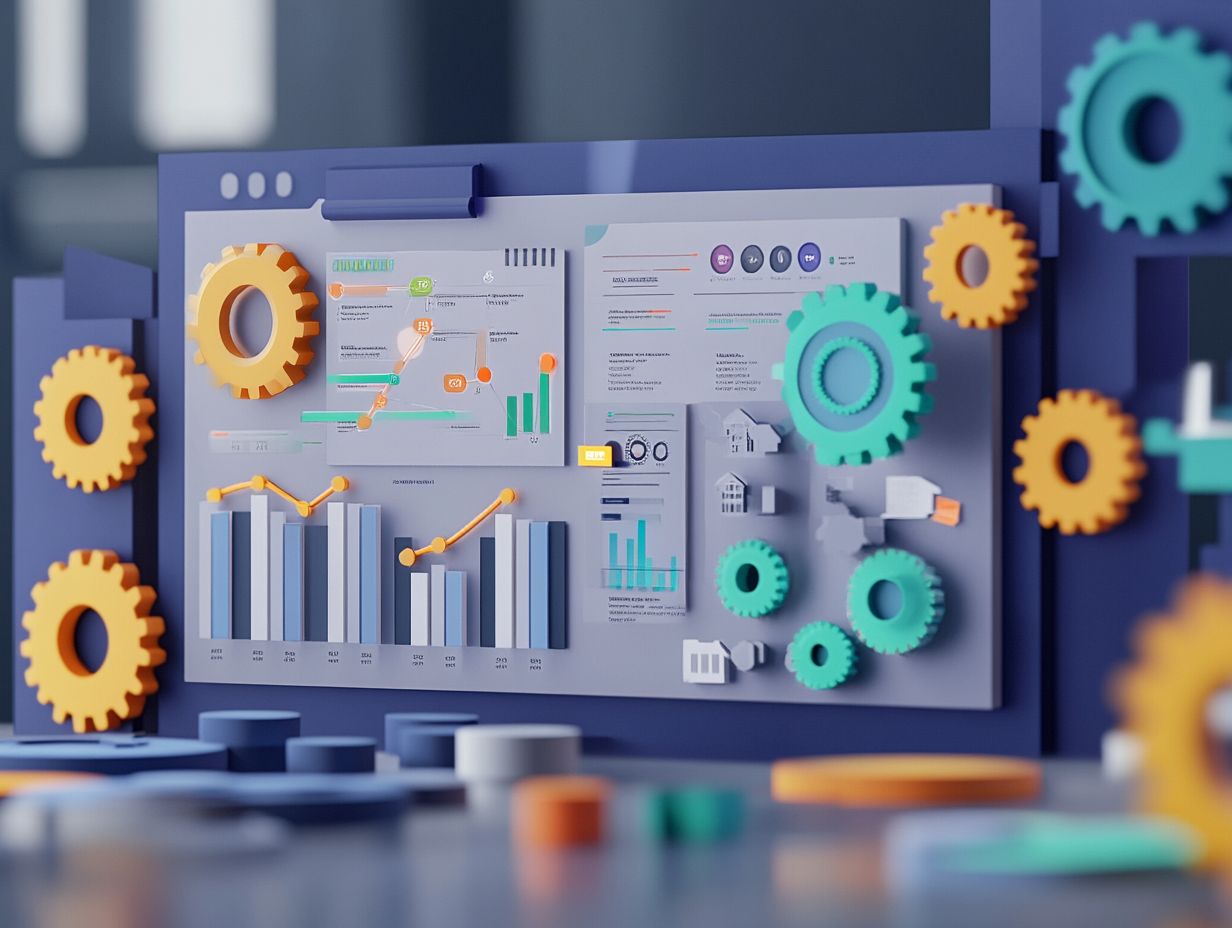62. how to use integration to track project milestones
Project milestones serve as pivotal markers that allow you to assess progress and maintain alignment with your objectives. Understanding their definition and significance is crucial for effective project management.
This article explores the benefits of integrating tools for milestone tracking and highlights how streamlined processes can enhance communication within your team. You ll discover various software options and best practices for crafting a cohesive project plan.
Learn effective monitoring methods, address common challenges, and uncover solutions to keep your projects on track. Join in as you explore these essential elements that contribute to successful project execution.
Contents
- Key Takeaways:
- Understanding Project Milestones
- Benefits of Integration for Tracking Milestones
- Tools and Techniques for Integration
- Creating an Integrated Project Plan
- Monitoring and Tracking Milestones
- Addressing Challenges and Adjusting Integration
- Common Issues and Solutions
- Frequently Asked Questions
- Q1: What is integration and how does it help in tracking project milestones?
- Q2: How do I set up integration for tracking project milestones?
- Q3: Can I integrate multiple tools for tracking project milestones?
- Q4: What are some examples of tools that can be integrated for tracking project milestones?
- Q5: How does integration help in identifying project delays?
- Q6: Are there any disadvantages to using integration for tracking project milestones?
Key Takeaways:

Project milestones are important checkpoints in a project and are crucial for its success. Integrating project management tools and techniques streamlines communication and processes, making milestone tracking more efficient. Creating an integrated project plan and regularly monitoring and adjusting milestones can help ensure a project stays on track and meets its goals.
Understanding Project Milestones
Understanding the importance of project milestones is essential in project management. They signify key events that mark the completion of significant deliverables throughout the project lifecycle.
These milestones serve as important reference points, enabling you to assess progress toward your project goals while ensuring adherence to the timeline. They do more than just help track progress; they are instrumental in achieving project success by offering a structured approach to managing project phases and resources effectively.
Definition and Importance
Project milestones are key markers in your project timeline that highlight the completion of significant phases or the achievement of important deliverables. These milestones serve as indicators of progress within the realm of project management, helping you and your team assess advancements and make necessary adjustments to your plans.
By clearly establishing milestones, you can set realistic expectations for everyone involved in the project, keeping all informed and aligned throughout the project lifecycle. These milestones enhance communication and provide structured opportunities to celebrate achievements, tackle potential challenges, and recalibrate goals when needed.
Recognizing the importance of these milestones drives project success by fostering transparency and accountability, making it easier for you to navigate project complexities.
Benefits of Integration for Tracking Milestones
Integrating effective tools and methodologies for tracking project milestones offers you numerous advantages, including heightened accountability and a clearer perspective on project success at each phase.
By leveraging these resources, you can ensure that each step is measured and evaluated, leading to more informed decision-making and ultimately, a more successful outcome.
Streamlining Processes and Communication
Streamlining processes and communication among everyone involved in the project is crucial for effective project management, ensuring that all team members are in sync with the project timeline.
This alignment builds teamwork and reduces misunderstandings that can lead to costly delays.
One effective strategy is to hold regular review meetings. These meetings serve as vital checkpoints for the project, enabling teams to assess progress and make necessary adjustments.
By actively engaging everyone throughout the project lifecycle, you enhance both transparency and accountability.
Soliciting feedback at various stages allows you to better anticipate challenges and identify solutions early on, ultimately leading to smoother execution of your project goals.
Tools and Techniques for Integration

Utilizing the right project management tools and techniques for integration is essential for effectively tracking milestones. This can significantly elevate your overall project performance.
Now that you understand the power of project milestones, it’s time to implement these strategies. Start tracking your milestones today and watch your project soar!
Software Options and Best Practices
Choosing the right software and following best practices in project management is crucial for milestone tracking.
Effective project management software streamlines workflows and enhances communication. Tools like Asana, Trello, or Microsoft Project make setting and monitoring milestones easy, ensuring everyone stays aligned with project goals.
These platforms offer visual timelines, customizable dashboards, and collaborative tools. They facilitate real-time updates and feedback.
Implementing consistent tracking protocols and scheduling regular check-ins boosts accountability. This allows your team to adapt swiftly to challenges.
Creating an Integrated Project Plan
An integrated project plan is essential in project management.
This foundational step aligns every phase of your project with well-defined objectives and timelines.
Steps and Considerations
Key steps include defining objectives, outlining phases, and establishing a realistic timeline.
Defining objectives provides direction and benchmarks performance. Outlining phases enables systematic progress tracking, making adjustments easier.
A realistic timeline requires thoughtful resource allocation. Engaging stakeholders offers valuable insights and fosters collaborative ownership.
Monitoring and Tracking Milestones
Monitoring milestones is essential to evaluate project progress.
This careful attention to detail empowers informed decisions and keeps the project on track.
Effective Methods and Tips

Effective methods for tracking milestones enhance project progress and minimize mistakes.
Set clear, measurable goals and regularly assess each milestone to keep your team motivated.
Use Gantt charts to visualize tasks and deadlines, ensuring everyone has access to the latest information.
Regular check-ins and feedback loops help identify delays early, allowing timely adjustments.
Proactive communication avoids misunderstandings and keeps stakeholders engaged, fostering collaboration.
Addressing Challenges and Adjusting Integration
Addressing challenges and refining integration strategies is essential for navigating any project’s intricacies.
This approach helps you handle complexities head-on, ensuring sustained success throughout the project lifecycle.
Common Issues and Solutions
Identifying common project management challenges can empower you to implement effective solutions for smoother execution. Challenges like stakeholder engagement and project complexity are key areas to focus on.
By recognizing these challenges early on, you can foster open communication channels that keep stakeholders involved and invested in the project’s success. Simplifying complex processes through agile methods flexible ways of working that help teams adapt quickly to changes enhances your team’s adaptability and responsiveness.
When you emphasize clarity in roles and responsibilities, you alleviate confusion and boost team morale. This proactive approach reduces risks and simplifies workflows, ensuring timely deliveries and heightened satisfaction among all parties involved.
Addressing these key issues increases your chances of success in an ever-evolving project landscape.
Frequently Asked Questions
Q1: What is integration and how does it help in tracking project milestones?
Integration involves combining different components or systems to work together seamlessly. In project management, integration helps track project milestones by connecting different processes and data sources, providing a holistic view of the project’s progress.
Q2: How do I set up integration for tracking project milestones?

The first step is to identify the tools and systems that you want to integrate. Then, choose project management software that supports integration with these tools. Next, follow the instructions provided by the software to set up the integration. You may need to configure certain settings or provide authorization for the integration to work.
Q3: Can I integrate multiple tools for tracking project milestones?
Yes! You can connect multiple tools to create a powerful tracking system that keeps you ahead of any project delays. This is one of the main benefits of integration it allows you to connect and synchronize data from different tools, giving you a comprehensive view of your project progress.
Q4: What are some examples of tools that can be integrated for tracking project milestones?
Some common tools that can be integrated for tracking project milestones include project management software, time tracking tools, task management tools, communication tools, and document management systems.
Q5: How does integration help in identifying project delays?
With integration, data from different sources is automatically synced, giving you real-time updates on project progress. This allows you to identify any delays or issues that may arise and take corrective action to keep the project on track.
Q6: Are there any disadvantages to using integration for tracking project milestones?
While integration offers many benefits, there are also some potential disadvantages to consider. Some integrations may be complex to set up and maintain, and there is always a risk of technical issues or data discrepancies. It is important to thoroughly research and test the integration before implementing it for project milestone tracking.





